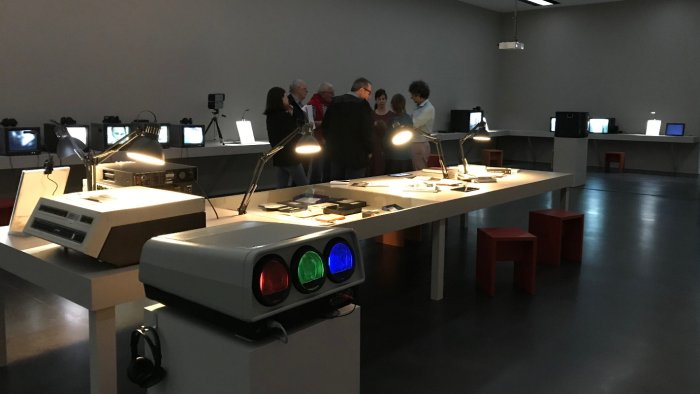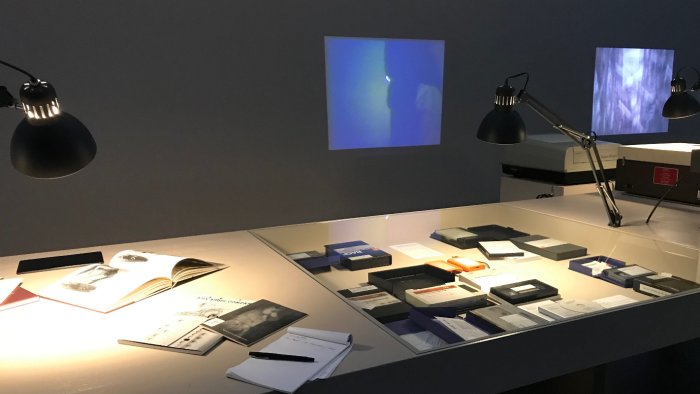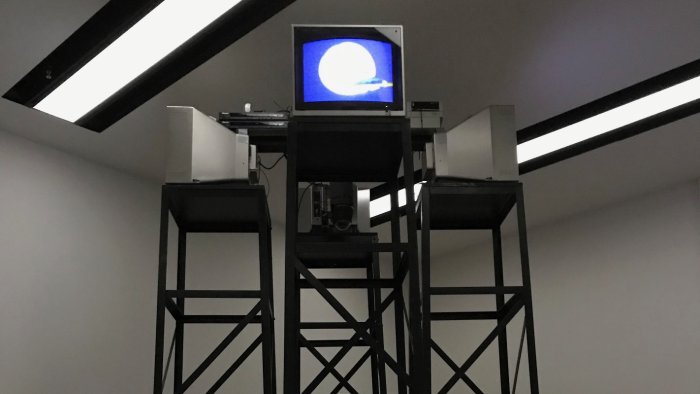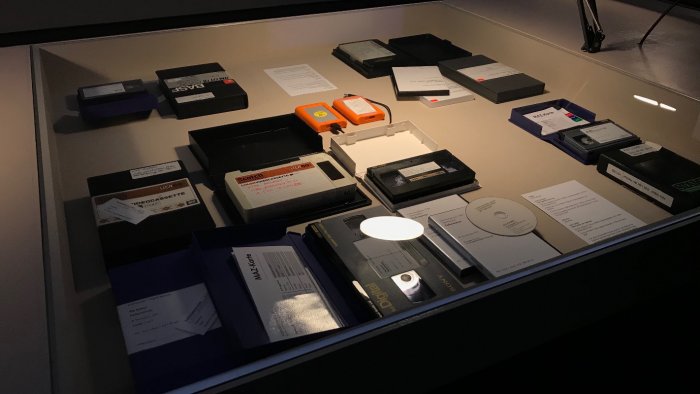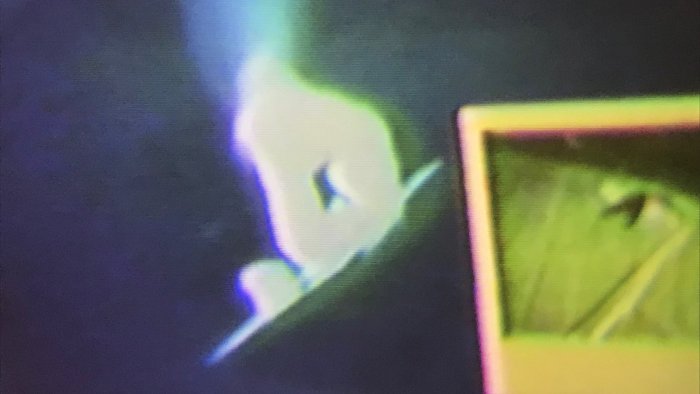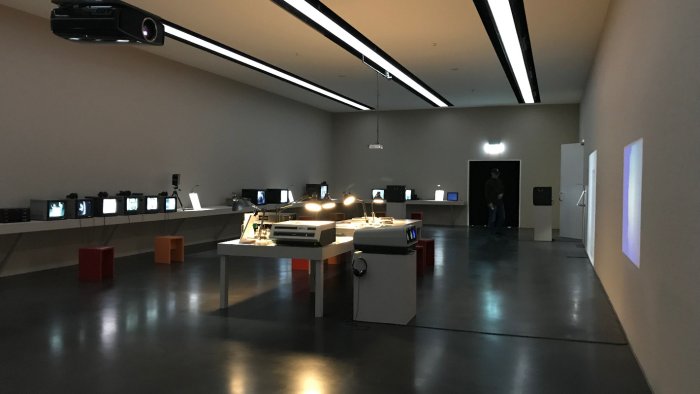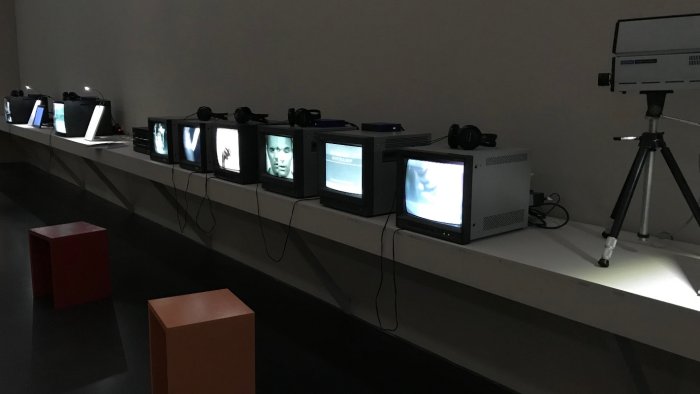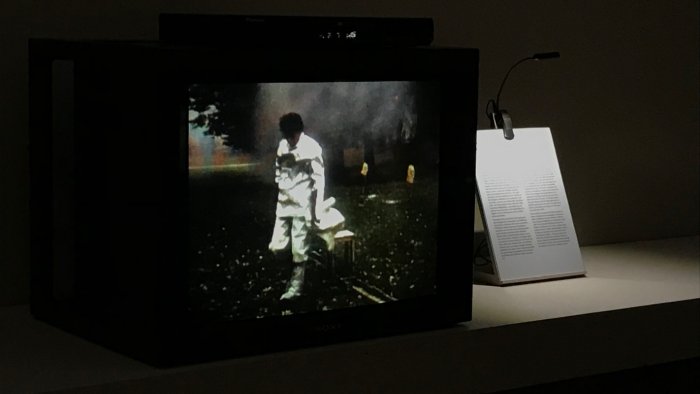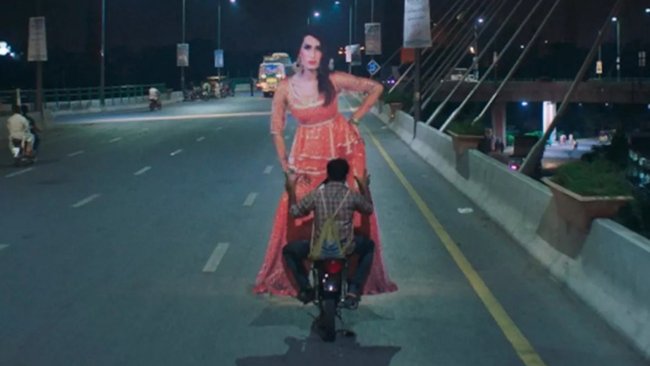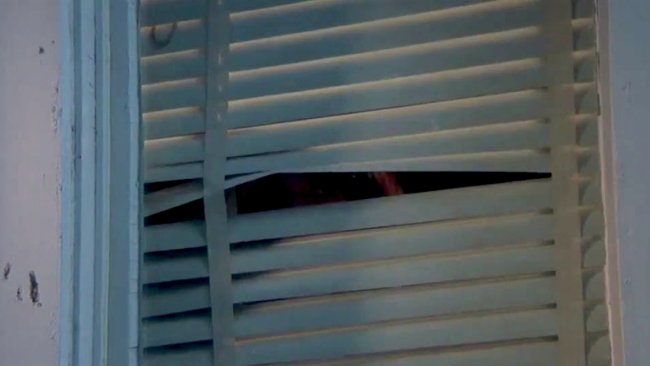Vom Band zum Byte
[…] There is a parallelism between this museum exhibition and the works that the exhibition shows. Both convey a certain self-reflection: self-reflection of the museum through the exhibition, and self-reflection of the video medium through the performances.
[…] In the welcoming work of the exhibition, Vito Acconci’s «Remote Control» (1971), the video is used as a performative installation. Therefore, it is no more a performance that is an instrument to make the medium of video self-reflect, but it is the video that becomes an instrument to make the performance self-reflect.
Text: Giuseppe Di Salvatore
Collecting, preserving, showing and mediating are the main tasks of a museum. All these tasks are coalesced in Vom Band zum Byte, where the curators Alexandra Blättler and Eveline Suter show a part of the video collection of the Kunstmuseum Luzern and mediate how to preserve it, in collaboration with Video Company (Aufdi Aufdermauer and Karin Wegmüller, Zofingen) and the Atelier für Videokonservierung (Agathe Jarczyk, Bern). The work of a museum and its making-of conflate in one presentation, whose installation serves the scopes of a reflection on the medium of video, from the film strip to the digital byte, and on the museum itself.
There is a parallelism between this museum exhibition and the works that the exhibition shows. Both convey a certain self-reflection: self-reflection of the museum through the exhibition, and self-reflection of the video medium through the performances. For the large part, the avantgarde experiments with video that we can see in the exhibition (in the time span from 1965 to 1988) are focused on performances that make the artist face the medium of video. More precisely, it is the body of the artist that is confronted with the materiality of video through the video itself: by directly manipulating the video and its screen (René Baumeister) or interacting with them (Jochen Gerz and Jean Otth), dramatizing the opposition of person and machine (Alex Silber) or making the video draw (Hannes Vogel) and reveal the source of the images (Rolf Winnewisser). Beside Peter Roehr’s more classical work concentrating on montage, experiments with video seem always to include a performative aspect, through which the video is both tool and target at the same time.
This material and performative approach in experimenting with video is a typical feature of those years, and finally expresses the modernist attitude of making the reflection on the medium explicit. There is another thread that we can follow through the works exhibited in Vom Band zum Byte though. In the welcoming work of the exhibition, Vito Acconci’s Remote Control (1971), the video is used as a performative installation. Therefore, it is no more a performance that is an instrument to make the medium of video self-reflect, but it is the video that becomes an instrument to make the performance self-reflect. Within the context of this different approach to video, we understand the focus of Silvie and Chérif Defraoui’s La traversée du siècle II (1988): here the medium (video) is no more the focus of the work, but an instrument – a medium… – to convey a meaning or an experience, these last ones being the real purpose of the work. This no-more-modernist approach (post-modernist?) is useful in interpreting the role of video in Roman Signer’s works in the exhibition. In particular, we can overcome the impression of the video being a mere support for his performances, and consider it as a medium that conveys an experience that is modelled through the specificity of the medium itself.
Self-reflection on the museum and its tasks, self-reflection on the medium of video through the performances, self-reflection of the performance itself through the video as medium… all of this is condensed into a very instructive and well installed exhibition at the Kunstmuseum Luzern. An exhibition that is also a time travel experience, from noisy projections to old monitors, up to digital screens, which appear so close and so far at the same time. The confrontation between the past and the present – at the heart of the question of digitalisation – is a further theme of the exhibition. Today, in a time of rapid technological evolution, we cope with a constant rise of the possibilities of working with video. We risk being crushed under the weight of these possibilities and their complexity. The freedom and pleasure in understanding and manipulating the medium that the artists of the past can show us become a fundamental stimulus for us to be now, again, curious people taking technique and technology as a source of inspiration. Band or byte, the film will remain a matter that our bodies face, and not a field of rules to be followed. Digital natives be warned.
Info
Vom Band zum Byte – Digitalisierung der Videosammlung | Exhibition | Kunstmuseum Luzern | 14/9-24/11/2019
First published: October 30, 2019
